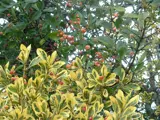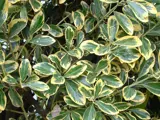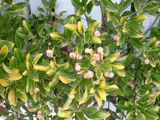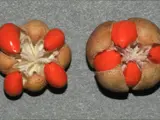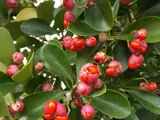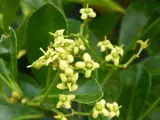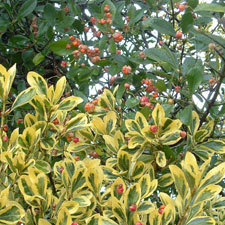 Japanese spindle tree
Japanese spindle tree
Common name: Japanese spindle tree
Botanical name: Euonymus japonicus
Management category: Advisory
Originally from Japan, Korea and China. It was introduced to New Zealand as an ornamental species and was recorded as naturalised in 1980. Trees may live for up to 150 years.
Why is it a pest?
- Forms dense stands in open or shade, preventing the establishment of native plant seedlings.
- Produces many seeds that are well dispersed by birds and possibly possums.
- Tolerates many climates and poor soil conditions.
Where is it found?
Disturbed bush and shrubland, coastal shrub and bare land, inshore islands, pohutukawa forest, forest margins and cliffs.
Fairly widespread in the Bay of Plenty region.
What does it look like?
- A hairless, evergreen shrub or small tree with much branched stems.
- Round or slightly four-ribbed twigs are usually smooth but wrinkle when dry.
- Glossy, ovalish, finely toothed leaves are in opposite pairs along stems.
- Greenish flowers are insignificant and in clusters of five to many.
- Fleshy, round, pink seed capsule are orange or red and surround the seeds.
What are the rules?
Advisory
Council does not enforce the control of advisory species. It is landowner/ occupier responsibility to manage these pests. Council may provide advice on how to manage or control advisory species if required.
How do you get rid of it?
- Hand-pull (all year)
- Cut and Paste (all year) with herbicide
- Spray (all year) with herbicide
CAUTION: When using any herbicide or pesticide, PLEASE READ THE LABEL THOROUGHLY to ensure that all instructions and directions for the purchase, use and storage of the product, are followed and adhered to.
Read more on pest control advice, information and regulations.
Images

